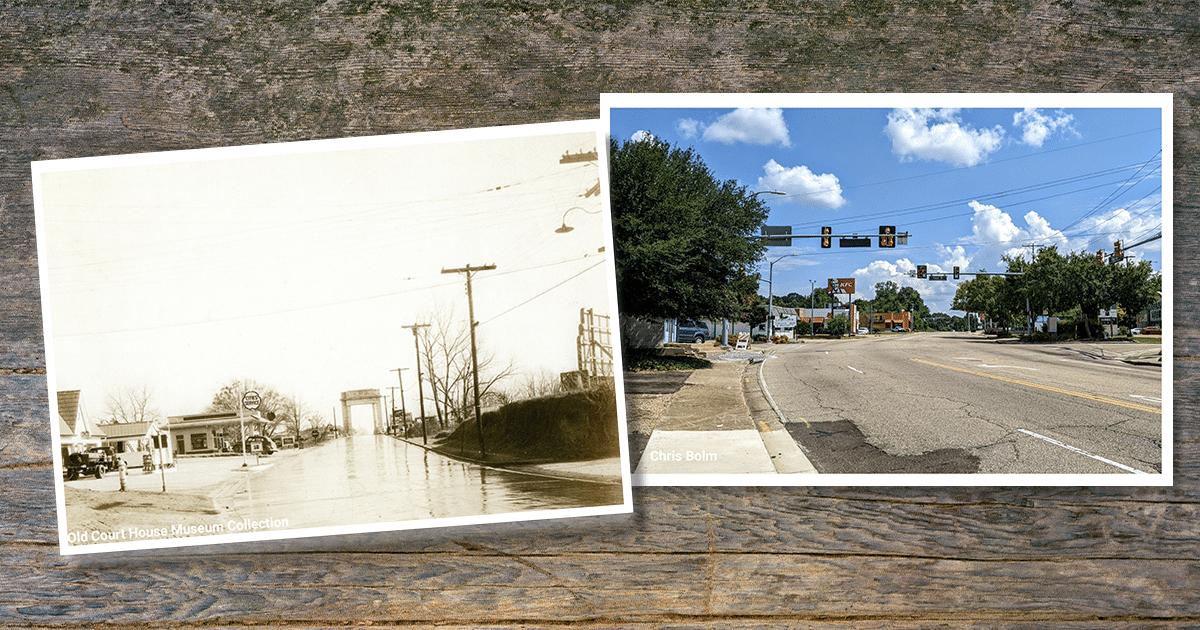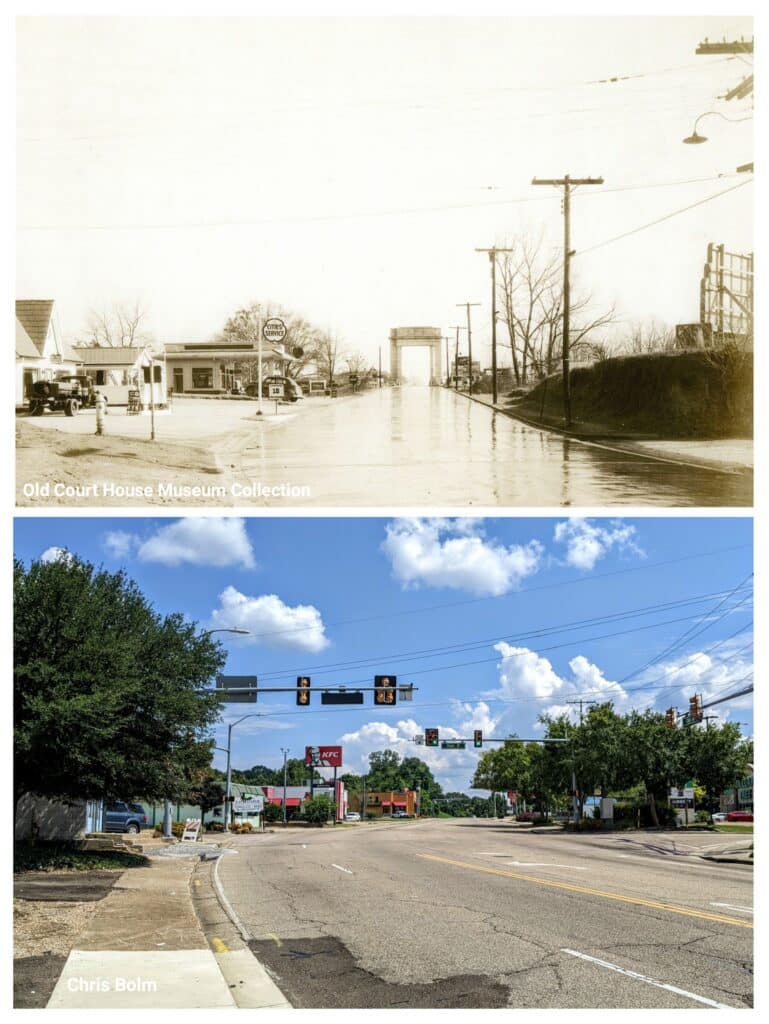History
At this place: the history of Vicksburg’s Memorial Arch, moved but not forgotten

VICKSBURG, Miss. by Chris Bolm (VDN) — If you drive along Clay Street today, you might never guess that a towering granite archway once stood over this busy stretch of road. The Memorial Arch, which once spanned Clay Street, was more than just a gateway to the Vicksburg National Military Park and the city; it was a national symbol of reconciliation.
The origins of the Memorial Arch trace back to 1917, when the U.S. Congress allocated $150,000 to fund the National Memorial Celebration and Peace Jubilee, a four-day event held at Vicksburg National Military Park that brought together nearly 8,000 Union and Confederate veterans. When the jubilee concluded, about $35,000 remained unused. Rather than return the funds, Congress approved using them to build a permanent commemorative structure. The result was the Memorial Arch.
Unlike many of the monuments in town that commemorate battlefield strategy or heroic sacrifice, the arch tells a different part of the story: the aftermath. It celebrates the fact that veterans who once stood on opposite sides of the conflict could come together, shake hands, and honor a shared history.
Completed in 1920, the arch was designed by Charles L. Lawhon, an architect and sculptor known for his classical style. Built from granite quarried at Stone Mountain, Georgia, the arch reflects the American Renaissance style. One side bears the inscription, “Vicksburg National Military Park,” while the other honors the 1917 Peace Jubilee with the words: “Memorial to the National Reunion of Union and Confederate Veterans of the Civil War, Oct. 16–19, 1917.”
For decades, the arch stood as one of the park’s most visible landmarks, greeting visitors of both the park and the city as they passed beneath it. By the mid-20th century, however, growing traffic on Clay Street created a problem. The road had become a busy thoroughfare, and the arch no longer met safety standards for modern vehicles. Once a welcoming portal, it had become a hazard. In 1967, the decision was made to dismantle and relocate the structure.
The arch was carefully moved to a new location within the park, where it now marks the beginning of the tour road. Today, the Memorial Arch remains an important feature of Vicksburg National Military Park, though its original placement is still remembered by many locals and historians. In an age when national unity is often tested, the story of the Memorial Arch serves as a reminder of the potential for peace, even in the face of deep division.

The Old Court House Museum has an outstanding collection of historic photos from Vicksburg and Warren County. If you are ever interested in getting an old photo printed for your home or business, contact the staff at the Old Court House Museum and they can make it happen.
Starting in 2022, Chris Bolm began to take images from the Old Court House Museum‘s photo collections and pinpoint their current locations and replicate the shot. Bolm named the series “Then and Now.”
See a typo? Report it here.












